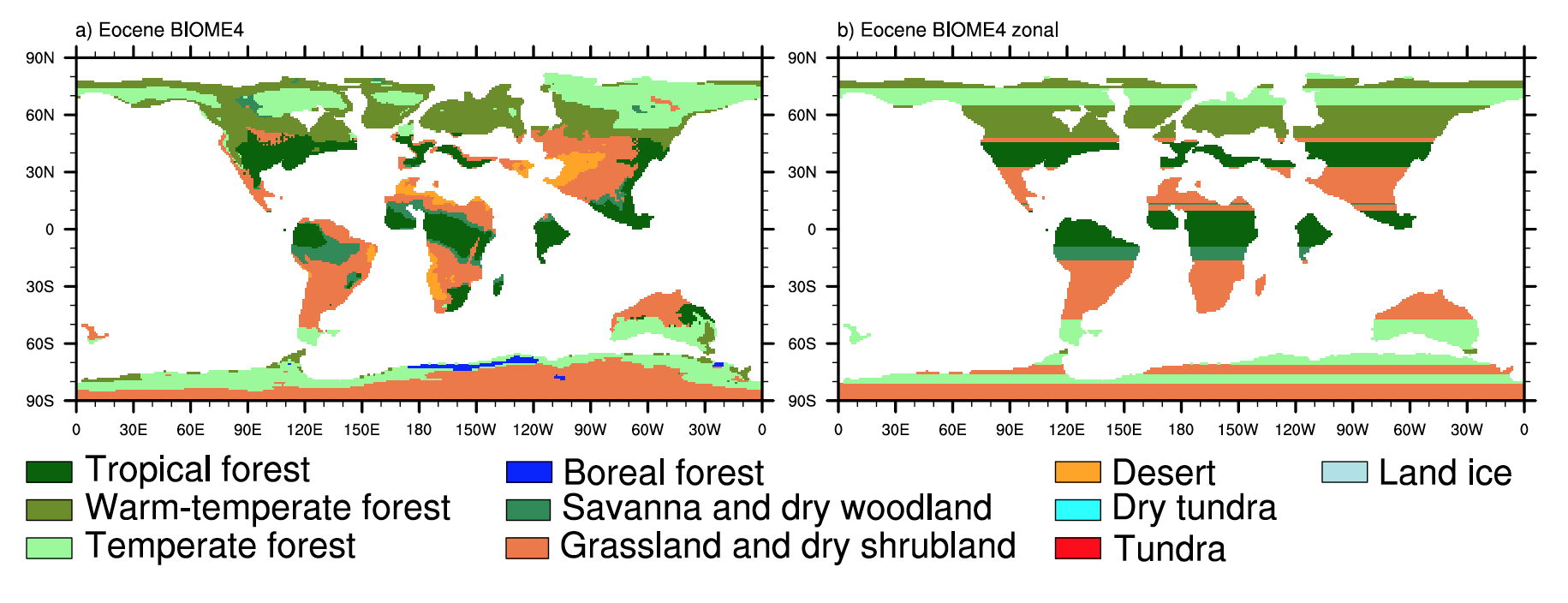Project Summary
Plate reconstruction models for the rifting and separation of Gondwanaland’s conjugate margins continue to be poorly constrained in detail. We propose to develop a new plate model for the entire Indian ocean by synthesizing old and new geological and geophysical data using our plate tectonic software system. We will test continental fit reconstruction hypotheses and alternative models for the early opening of the Indian Ocean by using a variety of reconstructed gridded and vector data sets. … Read more…
Prof Dietmar Müller
Phone: +61 2 9351 4255
Fax: +61 2 9351 3644
School of Geosciences
The University of Sydney
Sydney, NSW 2006
Australia
View Dietmar's Sydney Uni page
See below for EarthByte content related to Dietmar.
Solid Earth – The Cretaceous and Cenozoic tectonic evolution of Southeast Asia
Zahirovic, S., Seton, M., & Müller, R. D. (2014). The Cretaceous and Cenozoic tectonic evolution of Southeast Asia. Solid Earth, 5(1), 227-273. doi:10.5194/se-5-227-2014. The Cretaceous and Cenozoic tectonic evolution of Southeast Asia Download supplementary material – zip file
Tectonophysics – Cenozoic uplift of South Western Australia as constrained by river profiles
Barnett-Moore, N., Flament, N., Heine, C., Butterworth, N., & Müller, R. D. (2014). Cenozoic uplift of south Western Australia as constrained by river profiles. Tectonophysics, 622, 186-197. doi: 10.1016/j.tecto.2014.03.010. Cenozoic uplift of south Western Australia as constrained by river profiles
Geophysics – Mapping crustal thickness using marine gravity data: Methods and uncertainties
Bai, Y., Williams, S. E., Müller, R. D., Liu, Z., & Hosseinpour, M. (2014). Mapping crustal thickness using marine gravity data: Methods and uncertainties. Geophysics, 79(2), G27-G36. doi: 10.1190/GEO2013-0270. Mapping crustal thickness using marine gravity data: Methods and uncertainties Download supplementary material
Geochemistry, Geophysics, Geosystems – Community infrastructure and repository for marine magnetic identifications
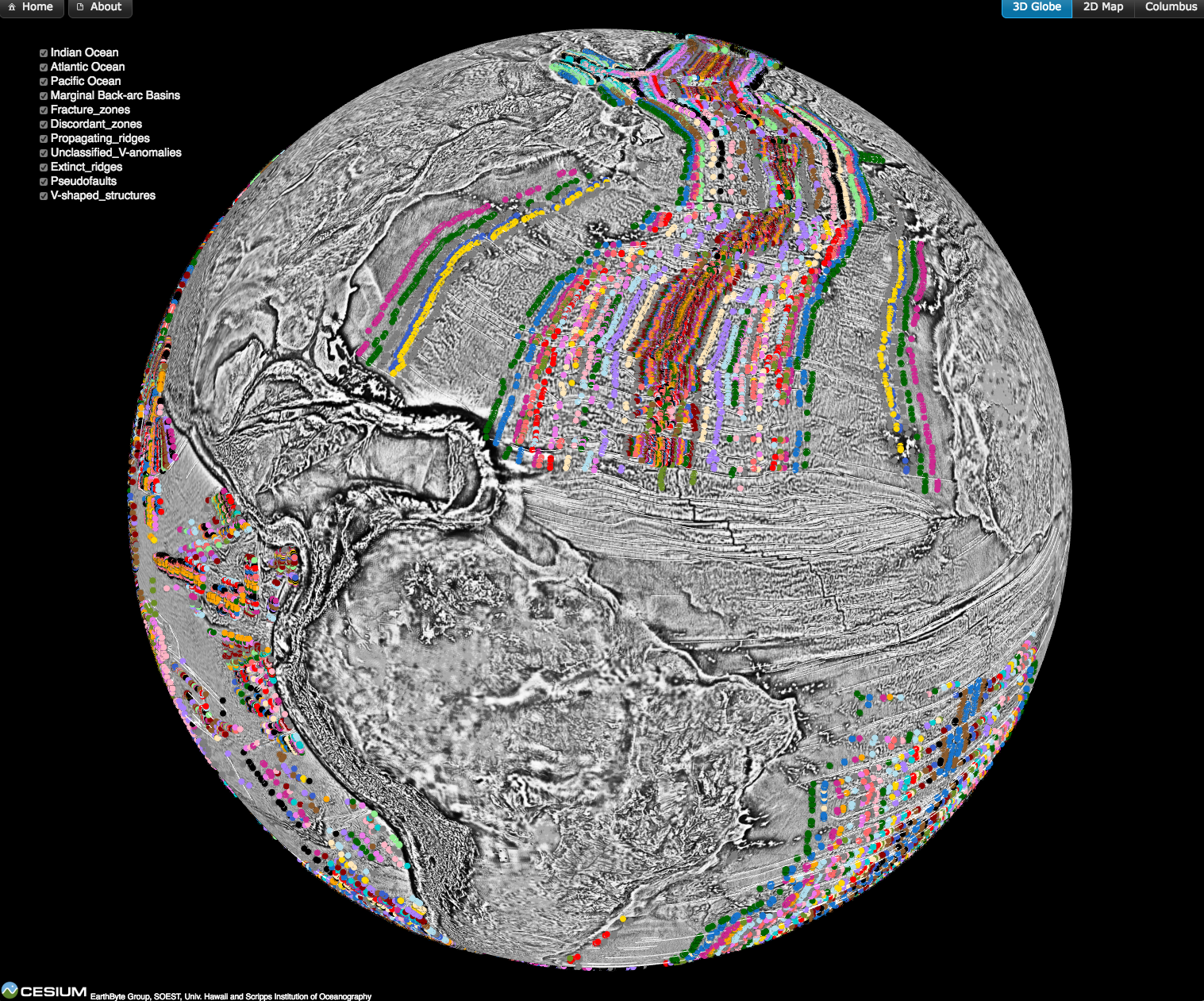 Magnetic anomaly identifications form the primary data set from which the age of the oceanic lithosphere can be determined, a critical component of reconstructing the seafloor spreading history of ocean basins. This data is now available as part of an open source, community-driven online repository that contains quality-checked magnetic anomaly picks, organised by ocean basin and publication source.
Magnetic anomaly identifications form the primary data set from which the age of the oceanic lithosphere can be determined, a critical component of reconstructing the seafloor spreading history of ocean basins. This data is now available as part of an open source, community-driven online repository that contains quality-checked magnetic anomaly picks, organised by ocean basin and publication source.
Solid Earth – Pacific plate slab pull and intraplate deformation in the early Cenozoic
Butterworth, N. P., Müller, R. D., Quevedo, L., O’Connor, J. M., Hoernle, K., & Morra, G. (2014). Pacific Plate slab pull and intraplate deformation in the early Cenozoic. Solid Earth, 5(2). doi: 10.5194/sed-6-1-2014. Pacific Plate slab pull and intraplate deformation in the early Cenozoic
Geoscientific Model Development – A suite of early Eocene (~55 Ma) climate model boundary conditions
Herold, N., Buzan, J., Seton, M., Goldner, A., Green, J. A. M., Müller, R. D., Markwick, P., & Huber, M. (2014). A suite of early Eocene (~ 55 Ma) climate model boundary conditions. Geoscientific Model Development, 7(5), 2077-2090. doi: 10.5194/gmd-7-2077-2014.
A suite of early Eocene (~ 55 Ma) climate model boundary conditions
Earth and Planetary Science Letters – Topographic assymetry of the South Atlantic from global models of mantle flow and lithospheric stretching
Flament, N., Gurnis, M., Williams, S., Seton, M., Skogseid, J., Heine, C., & Müller, R. D. (2014). Topographic asymmetry of the South Atlantic from global models of mantle flow and lithospheric stretching. Earth and Planetary Science Letters, 387, 107-119. dx.doi.org/10.1016/j.epsl.2013.11.017. Topographic asymmetry of the South Atlantic from global models of mantle flow and lithospheric stretching … Read more…
Topographic asymmetry of the South Atlantic from global models of mantle flow and lithospheric stretching
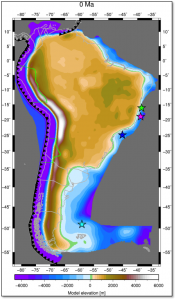 Citation
Citation
Flament, N., Gurnis, M., Williams, S., Seton, M., Skogseid, J., Heine, C., & Müller, R. D. (2014). Topographic asymmetry of the South Atlantic from global models of mantle flow and lithospheric stretching. Earth and Planetary Science Letters, 387, 107-119. dx.doi.org/10.1016/j.epsl.2013.11.017.
Abstract
The relief of the South Atlantic is characterized by elevated passive continental margins along southern Africa and eastern Brazil, and by the bathymetric asymmetry of the southern oceanic basin where the western flank is much deeper than the eastern flank. We investigate the origin of these topographic features in the present and over time since the Jurassic with a model of global mantle flow and lithospheric deformation. The model progressively assimilates plate kinematics, plate boundaries and lithospheric age derived from global tectonic reconstructions with deforming plates, and predicts the evolution of mantle temperature, continental crustal thickness, long-wavelength dynamic topography, and isostatic topography. … Read more…
Journal of Geodynamics – Geological, tomographic, kinematic and geodynamic constraints on the dynamics of sinking slabs
Butterworth, N. P., Talsma, A. S., Müller, R. D., Seton, M., Bunge, H. P., Schuberth, B. S. A., … & Heine, C. (2014). Geological, tomographic, kinematic and geodynamic constraints on the dynamics of sinking slabs. Journal of Geodynamics, 73, 1-13. doi: 10.1016/j.jog.2013.10.006. Geological, tomographic, kinematic and geodynamic constraints on the dynamics of sinking slabs Supplementary material
Solid Earth – Full-fit reconstruction of the Labrador Sea and Baffin Bay
Hosseinpour, M., Müller, R. D., Williams, S. E., & Whittaker, J. M. (2013). Full-fit reconstruction of the Labrador Sea and Baffin Bay. Solid Earth, 4(2), 461-479. doi :10.5194/se-4-461-2013. Full-fit reconstruction of the Labrador Sea and Baffin Bay Supplementary material
The breakup of east Gondwana: assimilating constraints from Cretaceous ocean basins around India into a best-fit tectonic model, Gibbons et al. (2013)
Citation
Gibbons, A., Whittaker, J. and R. Dietmar Müller, (2013), The break up of East Gondwana: assimilating constraints from Cretaceous ocean basins around India into a best-fit tectonic model. Journal of Geophysical Research, 118, 1-15: doi:10.1002/jgrb.50079
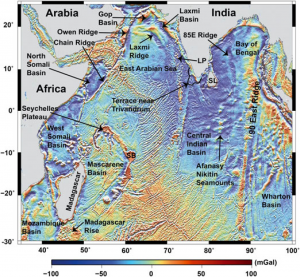 Summary
Summary
Published models for the Cretaceous seafloor-spreading history of East Gondwana result in unlikely tectonic scenarios for at least one of the plate boundaries involved and/or violate particular constraints from at least one of the associated ocean basins. We link East Gondwana spreading corridors by integrating magnetic and gravity anomaly data from the Enderby Basin off East Antarctica within a regional plate kinematic framework to identify a conjugate series of east-west-trending magnetic anomalies, M4 to M0 (~126.7–120.4 Ma). … Read more…
Seawater chemistry driven by supercontinent assembly, breakup and dispersal, Müller et al. (2013)
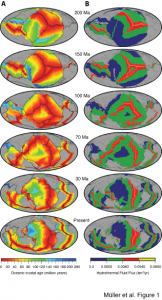 Citation
Citation
Müller, R. D., Dutkiewicz, A., Seton, M. and Gaina, C. (2013). Seawater chemistry driven by supercontinent assembly, break-up and dispersal Geology. doi 10.1130/G34405.1.
Summary
Global oceans are known to have alternated between aragonite and calcite seas. These oscillations reflect changes in the Mg/Ca ratio of seawater, which control biomineralisation and the composition of marine carbonates and are thought to be caused by the time dependence of crustal accretion at mid-ocean ridge crests and associated high temperature mid-ocean ridge brine flux. Here we use global ocean basin reconstructions to demonstrate that these fluctuations are instead caused by the gradual growth and destruction of mid-ocean ridges and their relatively cool flanks during long-term tectonic cycles thus linking ocean chemistry to off-ridge low temperature hydrothermal flux. Early Jurassic aragonite seas were a consequence of supercontinent stability and minima in mid-ocean ridge length and basalt alteration. The break-up of Pangaea led to a gradual doubling in ridge length and a 50% increase in hydrothermal flux mainly through an enormous increase in ridge flank area, leading to enhanced alteration of basalt, lowered seawater Mg/Ca ratios and marine hypercalcification from 140 to 35 Ma. … Read more…
GPlates finalist in The Australian Innovation Challenge 2013
EarthByte-developed GPlates software, represented by Prof Dietmar Müller, has been nominated for The Australian Innovation Challenge 2013 and it has become a finalist in the minerals and energy category! Read the article published in The Australian here
A review of observations and models of dynamic topography
Citation
Flament, N., Gurnis, M., & Müller, R. D. (2013). A review of observations and models of dynamic topography. Lithosphere, 5(2), 189-210. doi: 10.1130/L245.1
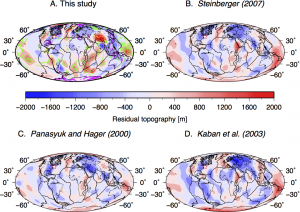 Summary
Summary
The topography of Earth is primarily controlled by lateral differences in the density structure of the crust and lithosphere. In addition to this isostatic topography, flow in the mantle induces deformation of its surface leading to dynamic topography. This transient deformation evolves over tens of millions of years, occurs at long wavelength, and is relatively small (<2 km) in amplitude. Here, we review the observational constraints and modeling approaches used to understand the amplitude, spatial pattern, and time dependence of dynamic topography. … Read more…
Tectonophysics – The Moho: boundary above upper mantle peridotites or lower crustal eclogites? A global review and new interpretations for passive margins
Mjelde, R., Goncharov, A., & Müller, R. D. (2013). The Moho: boundary above upper mantle peridotites or lower crustal eclogites? A global review and new interpretations for passive margins. Tectonophysics, 609, 636-650. doi: 10.1016/j.tecto.2012.03.001. The Moho: boundary above upper mantle peridotites or lower crustal eclogites? A global review and new interpretations for passive margins
EarthByte welcomes Professor Sanzhong Li and PhD student Shan Yu
EarthByte would like to welcome Professor Sanzhong Li who is visiting for 2 months from the Ocean University of China. We also welcome Shan Yu, a PhD student at the Ocean University of China who will study at EarthByte for 1 year. She will be developing plate reconstructions of the Paleotethys in central China and … Read more…
Earth and Planetary Science Letters – Convergence of tectonic reconstructions and mantle convection models for significant fluctuations in seafloor spreading
Coltice, N., Seton, M., Rolf, T., Müller, R. D., & Tackley, P. J. (2013). Convergence of tectonic reconstructions and mantle convection models for significant fluctuations in seafloor spreading. Earth and Planetary Science Letters, 383, 92-100. doi:10.1016/j.epsl.2013.09.032. Convergence of tectonic reconstructions and mantle convection models for significant fluctuations in seafloor spreading
Big Data project and Earthbyte data mining research features on Australia Unlimited website
The Big Data project and Earthbyte data-mining research was publicised in the “Data mining for gold” story on the Australia unlimited website. The project is now part of “Brand Australia“. Read the article here
Simon William’s paper selected as a research highlight in EOS
The recently published paper by Simon Williams et al. 2013, on Early India-Australia spreading history revealed by newly detected Mesozoic magnetic anomalies in the Perth Abyssal Plain, was selected as one of three research highlights in the current edition of EOS. Well done! Download EOS research highlights – pdf Download the paper – pdf
Simon William's paper selected as a research highlight in EOS
The recently published paper by Simon Williams et al. 2013, on Early India-Australia spreading history revealed by newly detected Mesozoic magnetic anomalies in the Perth Abyssal Plain, was selected as one of three research highlights in the current edition of EOS. Well done! Download EOS research highlights – pdf Download the paper – pdf
Understanding the deep driving forces of Earth’s large-scale topography through time
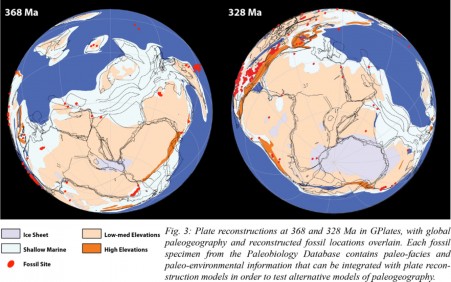 Project Summary
Project Summary
Continents and sedimentary basins through time record fundamental Earth system cycles, reflecting environmental change, migration of fauna and flora and shifting coastlines. It was originally thought that successive advances and retreats of shallow inland seas mainly reflect global sea level variations (eustasy). It is now well known in principle that large-scale surface morphology such as the high topography of the East African Rift, the low-lying Amazon River Basin and the southwest to northeast tilt of the Australian continent are strongly controlled by processes deep within the Earth, but progress has been slow in quantifying the magnitude and time-dependence of these relationships. … Read more…
Kara Matthews submits her PhD thesis
Congratulations to Kara Matthews who submitted her PhD thesis on 30th August! Kara was supervised by Dietmar Müller, Maria Seton and Nicolas Flament. She will be continuing to work at EarthByte in a post-doctoral position. Well done Kara!
Proceedings of the West Australian Basins Symposium IV – Tectonic Evolution and Continental Fragmentation of the Southern West Australian Margin
Whittaker, J.M., Halpin, J.A., Williams, S.E., Hall, L.S., Gardner, R., Kobler, M.E., Daczko, N.R. and Müller, R.D., (2013). Tectonic Evolution and Continental Fragmentation of the Southern West Australian Margin. Proceedings of the West Australian Basins Symposium IV, 18p. Tectonic Evolution and Continental Fragmentation of the Southern West Australian Margin
Proceedings of the West Australian Basins Symposium IV – Newly-recognised Continental Fragments Rifted from the West Australian Margin
Williams, S. E., Whittaker, J. M., & Müller, R. D. (2013). Newly-recognised continental fragments rifted from the West Australian margin. In The Sedimentary Basins of Western Australia IV. Proceedings of the Petroleum Exploration Society of Australia Symposium, Perth, WA (p. 10). Newly-recognised continental fragments rifted from the West Australian margin
Proceedings of the West Australian Basins Symposium IV – Structural Architecture of Australia’s Southwest Continental Margin and Implications for Early Cretaceous Basin Evolution
Hall, L., Gibbons, A. D., Bernardel, G., Whittaker, J. M., Nicholson, C., Rollet, N., & Müller, R. D. (2013). Structural architecture of Australia’s southwest continental margin and implications for Early Cretaceous basin evolution. In Proceedings, West Australian Basins Symposium. Petroleum Exploration Society of Australia (pp. 18-21). Structural architecture of Australia’s southwest continental margin and implications for … Read more…
Proceedings of the West Australian Basins Symposium IV – Structural Architecture of Australia's Southwest Continental Margin and Implications for Early Cretaceous Basin Evolution
Hall, L., Gibbons, A. D., Bernardel, G., Whittaker, J. M., Nicholson, C., Rollet, N., & Müller, R. D. (2013). Structural architecture of Australia’s southwest continental margin and implications for Early Cretaceous basin evolution. In Proceedings, West Australian Basins Symposium. Petroleum Exploration Society of Australia (pp. 18-21). Structural architecture of Australia’s southwest continental margin and implications for … Read more…
Big Data Knowledge Discovery featured in Australian Journal of Mining
The EarthByte ‘Big Data Knowledge Discovery Project’ is on the front cover of the current issue of the Australian Journal of Mining. Download the Paper – pdf Read more about the Big Data Knowledge Discovery project here
Solid Earth – Kinematics of the South Atlantic Rift
Heine, C., Zoethout, J., & Müller, R. D. (2013). Kinematics of the South Atlantic rift. arXiv preprint arXiv:1301.2096. doi:10.5194/se-4-215-2013. Kinematics of the South Atlantic rift Supplementary maps
Geology – Seawater chemistry driven by supercontinent assembly, breakup, and dispersal
Müller, R. D., Dutkiewicz, A., Seton, M., & Gaina, C. (2013). Seawater chemistry driven by supercontinent assembly, breakup, and dispersal. Geology, 41(8), 907-910. doi: 10.1130/G34405.1. Seawater chemistry driven by supercontinent assembly, breakup, and dispersal


